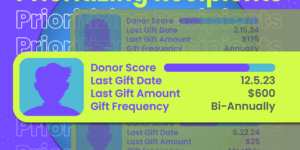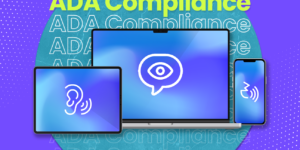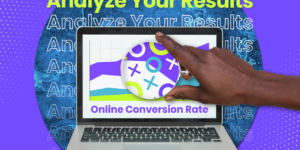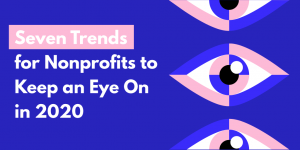As you know, effective fundraising is about engaging your audience with a message that feels personal and relevant. And using your data to segment your nonprofit’s audience allows you to speak more intimately with your supporters.
A message that resonated with long-term repeat donors will be lost on a lapsed donor, after all.
The criteria you use to determine who belongs in which segment might be different than other organizations. As you know, there’s no one-size-fits-all approach to fundraising.
Here are some ways you can segment your nonprofit’s audience and make your message more powerful for specific groups.

Geography is key.
Demographics, like a donor’s age, education level, and occupation are the most obvious areas to start segmenting your nonprofit’s audience.
And using a donor’s geographic location can open you up to a lot of possibilities.
For example, say you work at a large nonprofit that seeks to preserve open space and natural environments. You might segment your audience by location and focus your communications on the most well-known national park in a donor’s state.
But that doesn’t mean it can’t work on for smaller local or regional organizations! The same approach applies on the micro-level.
So, if your work focuses on one state, segment your audience by county and talk about local parks or natural landmarks in their immediate area.

A donor’s sense of self.
The way donors see themselves in relation to your mission is important.
As we’ve said before, your nonprofit is just the vehicle someone uses to make an impact on a cause that’s important to them. In other words, someone’s personality, values, opinions, interests, and attitudes are usually what draws them to your nonprofit in the first place.
And these attributes can tell you a lot about how to focus your message for different audiences.
You will need to learn a lot about how your donors see themselves to segment your nonprofit’s audience by psychographic traits. But this is often one of the most effective ways to segment your nonprofit’s audience.
So, to get started, send a simple, one question donor survey.
Ask your audience, “What is the primary reason you give to our organization?” and provide three specific options for answers.
Then, segment your next appeal based on their responses. Tailor the language in each version of your next appeal to speak to each of the three segment’s reasons for giving. Donors will know you really did care about their feedback when you speak to their motivations specifically in your next appeal!
And your message becomes more powerful when it speaks to the existing relationship a donor has with your nonprofit.
So, show them that you have the same motives and goals. Then, explain how their support will help you achieve your shared vision!
READ MORE: Why aren’t you using donor surveys?

Speak about past support.
Using giving history to segment your nonprofit’s audience is another straightforward and effective approach.
You want to place lapsed or at-risk donors in a different segment than donors who continue to give regularly, as we mentioned earlier. But this just scratches the surface of how nonprofits segment audiences based on past behavior.
Past giving and average gift size are other great areas to focus on.
For example, take all your donors who give more than once per year and place them into their own audience segment.
Using past gift size to segment your donors into separate giving levels is another great approach. It will help you make more relevant asks. And it gives you the chance to show your donors who give more than average some extra appreciation.
And you can use giving history in the same way. Consider creating audience segments for donors who have supported your nonprofit for five plus, ten plus, or over 20 years.
This way, you can speak more powerfully about everything you’ve accomplished since they first started giving. Versioning content based on giving history makes it easy to show your long-term donors some love!
READ MORE: Applying data-driven ask strings in your appeals.
Why is segmentation so important?
We know how easy it is to get caught up in the day-to-day when working at a nonprofit. With so much going on, even the smallest organizations don’t have the time or resources to craft an individualized message for every donor.
But you don’t want donors to feel like just another name on your mailing list! And your donors won’t feel special if you’re sending the same generic messages to your entire donor base.
You need to make your donors feel like an important part of your mission if you want them to support it!
Breaking up your audience and placing donors into segments based on their similarities makes it easier to version content and reach every donor with a message that feels relevant.
Still not sure how to get started with segmenting your audience? Then click here.









